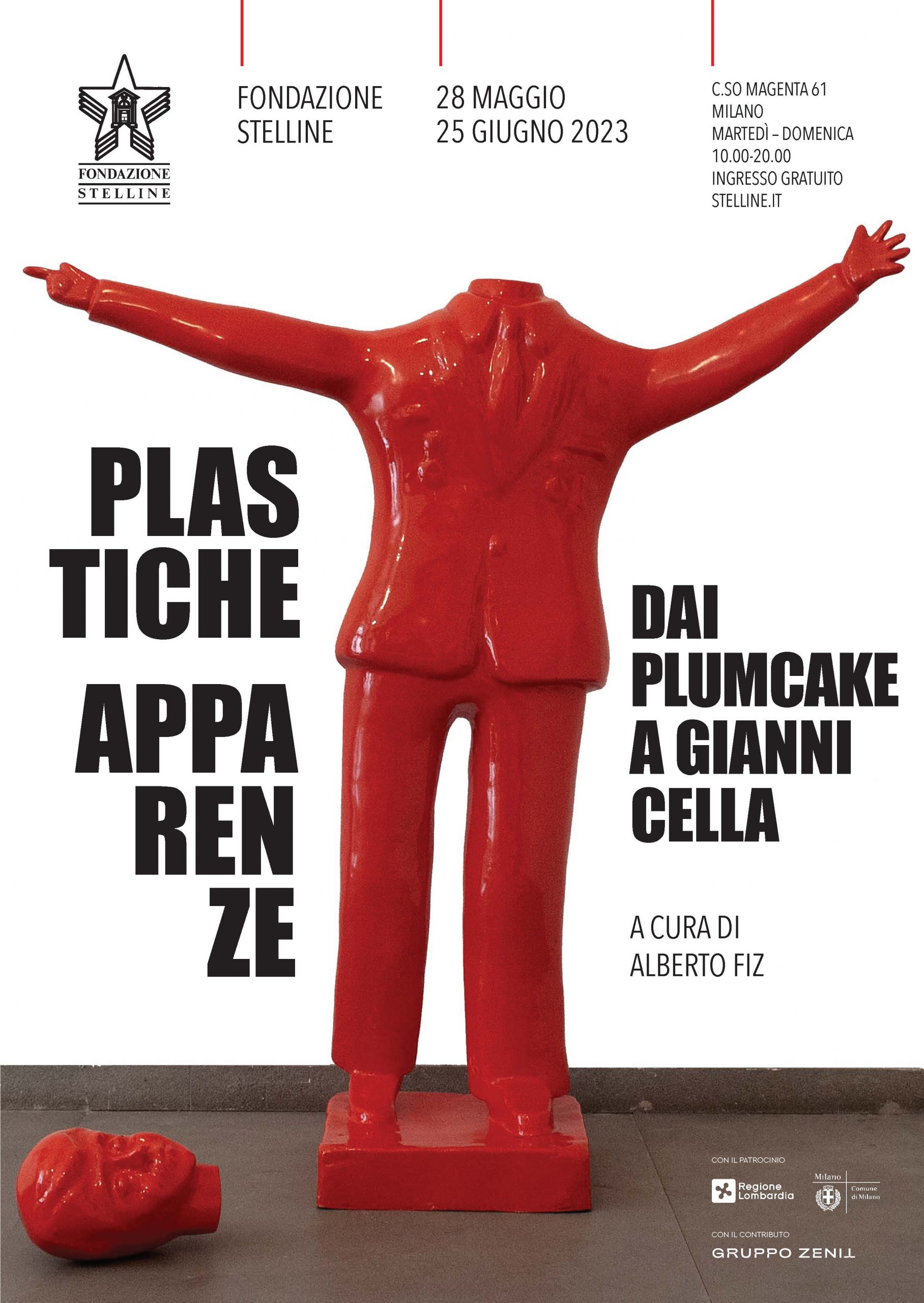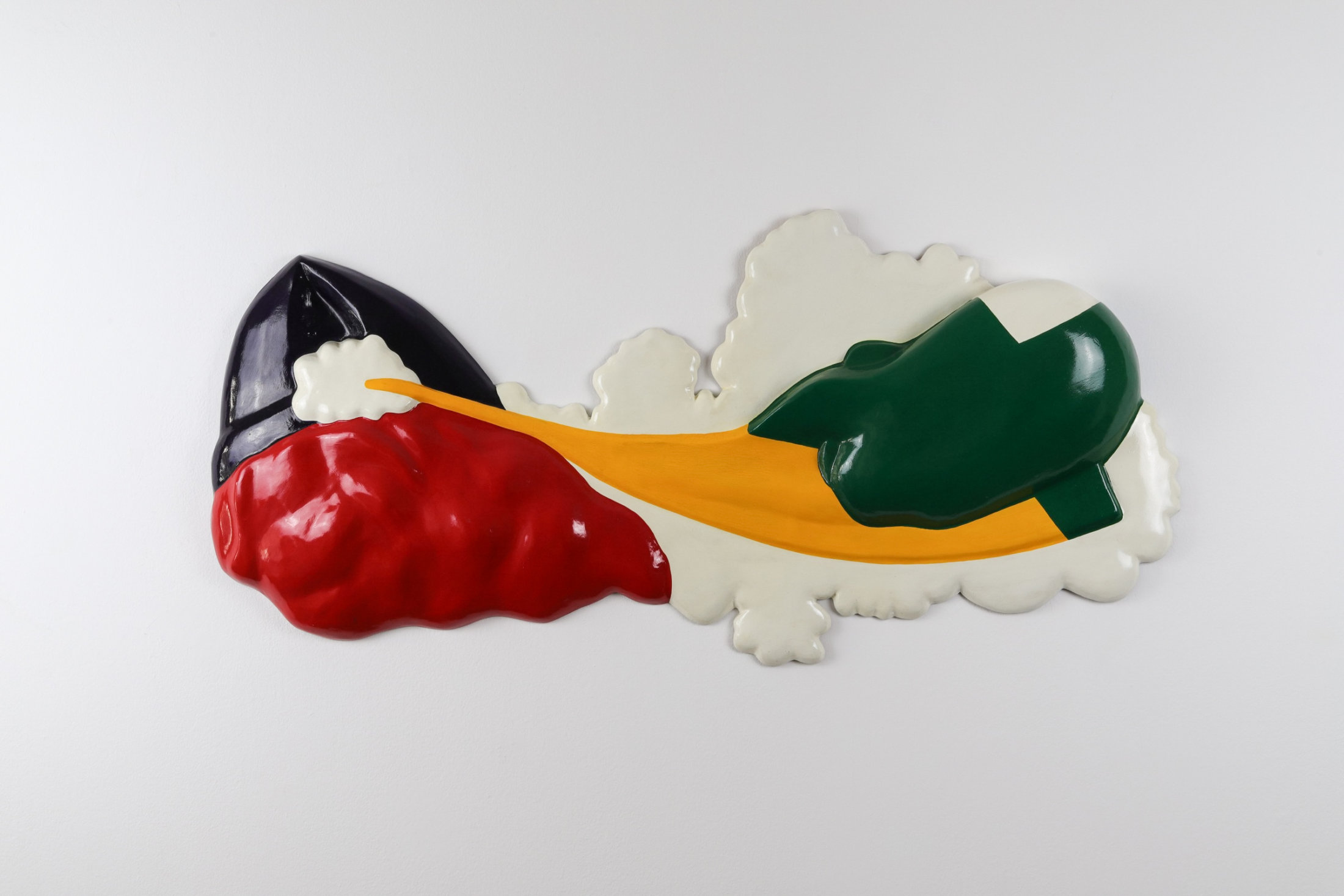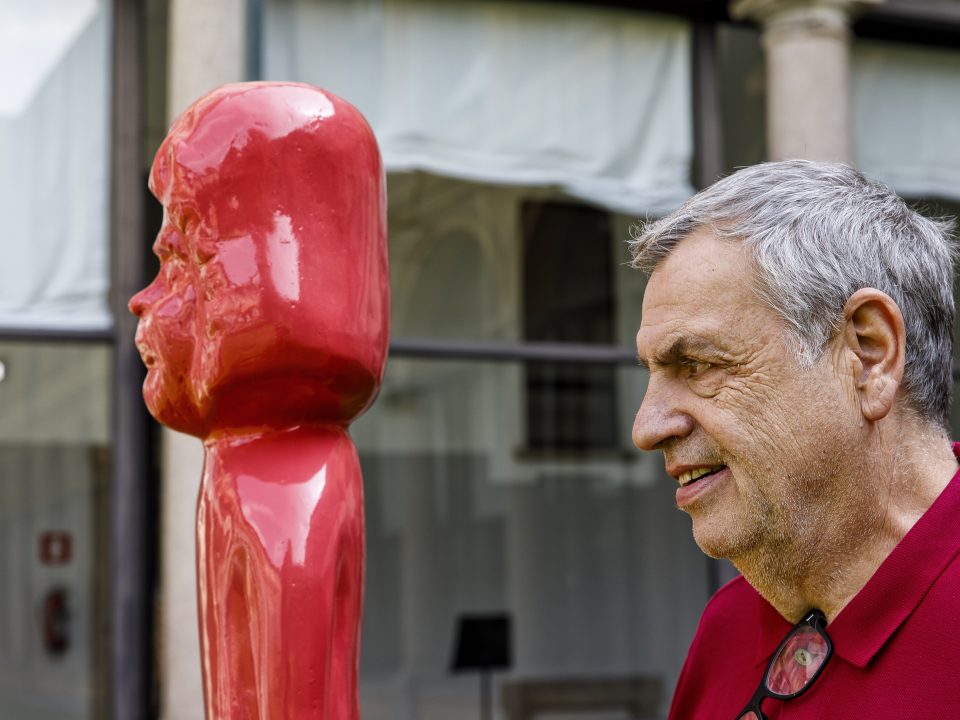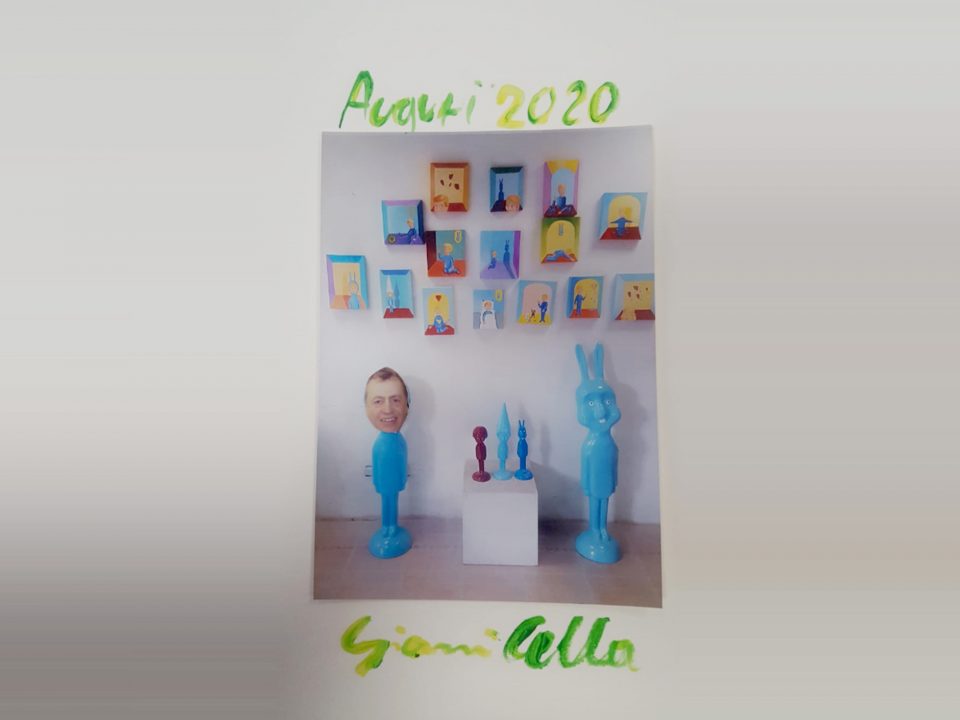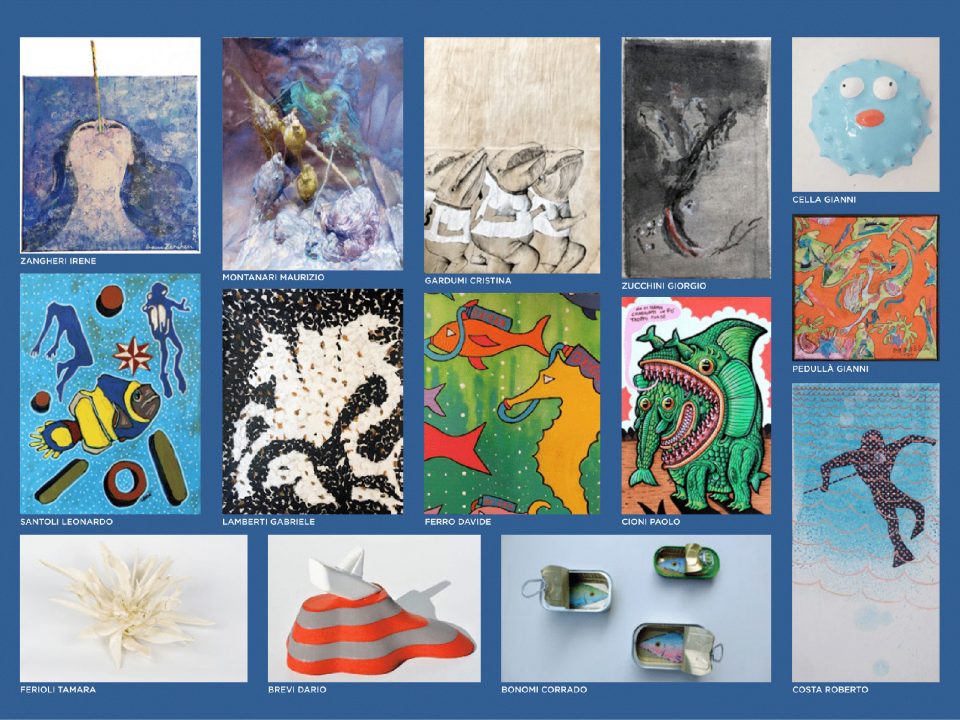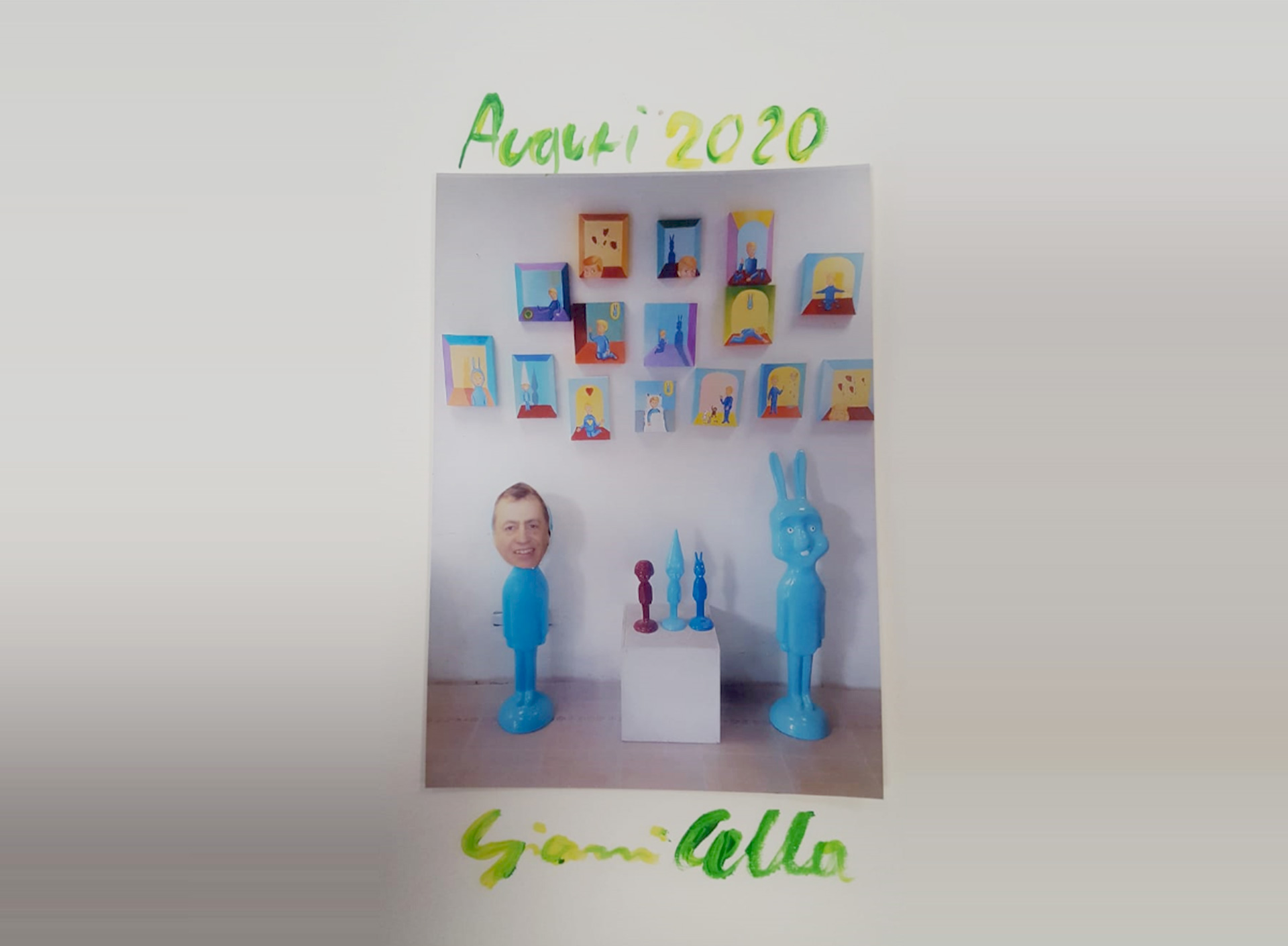
Happy Holidays
17 December 2020
How an exhibition is born: the backstage of Plastiche apparenze
20 June 2023The inauguration of Plastiche apparenze: from Plumcake to Gianni Cella, curated by Alberto Fiz, will be held on Saturday 27 May at 18.30 at the Fondazione Stelline in Milan.
An exhibition to celebrate Gianni Cella's 40 years of activity and tell the salient moments of his artistic evolution, from his debut with the historic collective of Plumcake up to individual success. The exhibition is completed by a spectacular installation by Cella in the Magnolia cloister
From 28 May to 25 June 2023, Fondazione Stelline presents Plastiche Apparenze. From Plumcake to Gianni Cella, an exhibition that proposes Gianni Cella's journey from collective to individual experience.
The exhibition, curated by Alberto Fiz, offers over 20 works including paintings, sculptures and installations created between 1983 and 2023.
«Plastiche apparenze allows to re-read in a completely original way the work of an artist who developed his poetics first in a group then individually, always affirming its otherness in comparison with the art system», says Fiz. «His images, deviant and elusive, absorb the author's discomfort which often coincides with that of the observer».
The review, hosted in the spaces of the Fondazione Stelline in the gallery II on the underground floor, represents an opportunity to celebrate the 40 years of activity of Gianni Cella, one of the founders - together with Romolo Pallotta and Claudio Ragni - of the historic collective Plumcake which began its exhibition activity in 1983 with works made in fiberglass that are inspired by the world of comics and mass communication, reinterpreting pop styles in a playful key. The name chosen was deliberately provocative and was inspired by a popular food with a soft and sugary shape. A paradoxical choice that of the Plumcakes who have been able to synthesize cultured and popular art, design and craftsmanship.
The group made its debut in 1983 with an exhibition at the Galleria Diagramma in Milan, the space managed by Luciano Inga-Pin. Since 1984, together with Abate, Bonfiglio, Innocente, Lodola, Palmieri, Postal, they create the group Nuovo Futurismo (New Futurism), theorized by Renato Barilli. In 1990 they took part in the Aperto section of the Venice Biennale, also curated by Renato Barilli.
Plastiche Apparenze is introduced by a series of historic works from the Plumcake period including Razzo (Rocket) from 1983 which synthesizes abstraction and figuration giving life to a mysterious shape with a stylized character who seems to be sleeping on a cloud. Of particular interest is La montagna delle lucertole (The lizards mountain) from 1985, a sort of sacred place inhabited by small reptiles that spread in the environment with references to primitive cultures and archeology. In the same context, Natura maligna (Malicious nature) from 1988 also appears, a rather ambiguous heart, one of the most recognizable stylistic features of Plumcake and Apparizioni modeste (Modest appearances) (1994) which anticipates the symbols of social networks.
In 2000 Cella began an individual journey and, as he himself wrote in his diary Una vita lemme lemme: «I abandoned group work to feel more responsible for my creative world. I am a visionary, prolific, polymorphic and kaleidoscopic artist». To tell all of this in a figurative key is Gioia e mistero (Joy and mystery) (2022), a polyptych that depicts the salient moments of his artistic life, from his diploma in painting at the Brera Academy up to the individual exhibitions of recent years.
As clearly emerges at the Stelline, since 2000 Cella's artistic career appears much more multifaceted and more complex than in the Plumcake period. The works, while maintaining a playful component, express discomfort and otherness. This is evident from Biancaneve e i sette uomini più stupidi del mondo (Snow White and the Seven Dumbest Men in the World) (2001), a cynical reflection on the fairy tale, as well as from Ex capo (2005), a sculpture with a severed head intended as a denunciation of power and from Ex equo (2005), a grotesque installation where a figure in glazed fiberglass with his face painted on an inflated balloon (inflated balloons are a recurring theme and the exhibition also includes a sculpture from 2018 with three superimposed inflated balloons painted according to the tricolor) plays hopscotch across the land of a corpse that, in a macabre twist, could be his. The crime is served in an exhibition where Orologio di Lombroso (Lombroso's Clock) (2011) appears with the hours replaced by very unsavory figures and two installations in progress with over 30 elements entitled Caos primigenio (2018-2023). They are a series of monochromatic yellow and red hybridizations where everything, from little stars to drops of water, is anthropomorphized and at the same time deformed. Thus, applying smileys and emojis here and there takes on a rather creepy and much less playful aspect than it might seem at first glance.
Next to a group of sculptures - including the Clessidra familiare (Familiar hourglass) (2011), which can be tilted depending on whether you prefer to let the girl or boy prevail - there is Lo Spirito del lago (The lake spirit), another variegated installation by 2016 where the lake constellation includes monsters and little monsters, but also Adam and Eve, the unlikely Pollock Brothers or submerged Vincent who naturally has the great Dutch painter as a reference. Van Gogh himself is present in the exhibition as part of the rebus dedicated to him (2023) in which the pears preceded by an “o” identify the "works" creating a highly effective figural aphorism, as happens for La principessa sul pisello (The Princess and the Pea) (2017).
The exhibition concludes with a space entirely dedicated to ex voto with a series of small votive paintings (2020) that, accompanied by weeping hearts in fiberglass, take up the tradition of popular painting in a contemporary key. At the center of the ex-votos, the presence of Harvey stands out, the sculpture of the imaginary friend, a bit rabbit and a bit alien, who accompanies the miraculously cured who have received pardon.
The review also includes a spectacular installation by Cella in the garden of the Magnolia Cloister entitled Totem with four monumental plastic works of over two meters that symbolize the chameleon-like aspects of the contemporary taking their cue from an ancient ritual. Among the totems there is not even a homage to the famous Marx Brothers to whom the artist has often been inspired by recovering the cynical and bewildered aspect of their humor.
The exhibition is organized and promoted by Fondazione Stelline with the patronage of Regione Lombardia and Comune di Milano and with the contibution of Gruppo Zenit. Thanks to Galleria Melesi.
The exhibition will be accompanied by a catalog edited by Alberto Fiz published by Allemandi, with texts by the curator, Alessandra Klimciuk, Marianna Cappia and an interview by Barbara Cottavoz to Gianni Cella.
PLASTICHE APPARENZE. FROM PLUMCAKE TO GIANNI CELLA
Curated by Alberto Fiz
28 May – 25 June 2023
Openings: Tuesday – Sunday, h. 10.00 am - 8.00 pm (Monday closed)
Free entry
Catalog: Allemandi
Fondazione Stelline, c.so Magenta 61, Milan
Info: mostre@stelline.it | stelline.it
Ufficio stampa Fondazione Stelline
Studio Giornaliste Associate BonnePresse
Gaia Grassi + 39 339 5653179
Marianna Corte + 39 347 4219001
